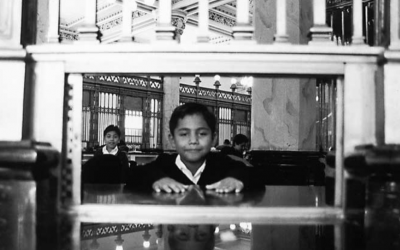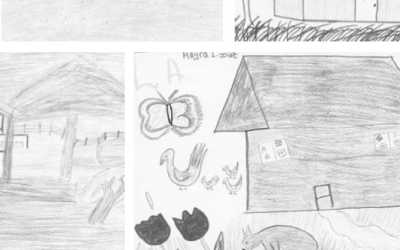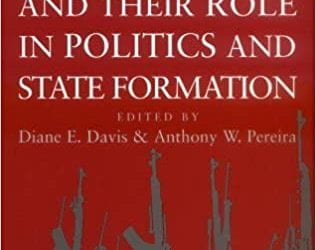Latinos and School Reform
Voice, Action and Agency
Ricardo stood shocked. His teacher was telling him, “You should drop out of school and go back to the Dominican Republic because immigrants are taking American tax dollars.” An 11th-grade student at Pérez High School, Ricardo thought to himself, “First of all, I was born here, second of all, that’s messed up.” While the above anecdote is not characteristic of all student-teacher interactions in U.S. schools, Ricardo, like many other Latino urban high school students, are often subjected to cruel treatment in school. The research shows that these experiences directly affect student attitudes and performance in school, yet there is little evidence that students have opportunities to voice such experiences and opinions. This article provides a snapshot of my work with Latino high school students in one urban classroom in an attempt to co-create that critical, yet absent, space to discuss their experiences, validate their perspectives and exercise their agency in analyzing and transforming their high school.
THE URBAN CONTEXT
Urban high schools, such as Pérez (a fictitious name for a Bostonarea high school), often have high dropout rates, low test scores, high teacher turnover and are often lacking in resources. These schools operate in areas plagued by high poverty and poor social services. According to the 2000 census, Latinos tend to concentrate in these urban metropolitan areas. Such communities are also characterized by high rates of residential segregation. According to Gary Orfield, co-director of the Civil Rights Project at Harvard University, Latinos are experiencing the most rapidly growing rates of residential segregation among all U.S. racial groups, surpassing even those of African-Americans. High levels of residential segregation are often associated with poorly performing schools. In many ways, Pérez High School reflects these nationwide trends and Ricardo and his classmates (all names used in this article are pseudonyms to protect confidentiality) are experiencing their effects.
Despite widespread school reform efforts, urban schools continue to face these troubling realities. For decades, policymakers, researchers, educators, and various other stakeholders have tried to improve these conditions. Yet, there has been little change, especially for Latinos and other historically neglected groups. This widespread failure calls for new approaches to school reform. While students are most affected by school reform efforts, reformers have largely overlooked and ignored students themselves. However, an increasing number of studies incorporate students’ voices into the school reform equation. This process both empowers students and enlightens educators to make more informed decisions about policy, research and practice in the classroom. Yet, students are incessantly marginalized and made “objects” of reform, rather than active “subjects” of the process. Soliciting students’ input, training them to do research in their schools, and including them in the research processes that inform reform efforts, places students in the role of the “expert.”
As a doctoral student at the Harvard Graduate School of Education, I am working with Latino high school students to name, analyze, and understand their schooling conditions and to brainstorm ways to improve those conditions. Paulo Freire’s Pedagogy of the Oppressed describing his work with Brazilian peasants has been an inspirational force; we Harvard graduate students learned that to engage people in social change, you must start with the people, where they are, in their context. We used Freire’s problem-posing method (defining the problem, exploring the causes, outlining solutions). The students defined the problem and we trained these young people to conduct research in their own school and finally to present their findings to Pérez High’s administration and faculty. As my peers and I recognize that monumental school reform does not occur overnight, we provided the space and the students guided the process that transformed these Latino high school students from “objects” to “experts” of school reform, engaging and guiding them to exercise their agency as critical thinkers, researchers, and students.
CRITICAL STUDENT RESEARCHERS
A classroom of twenty Pérez High School students volunteered to “work with graduate students on addressing issues in school” in October 2002. The four graduate students were one African-American female and one male, a Caucasian female and myself, a Chicano. To begin the process, we provided students with a brief history of school reform in the U.S. We had them pay special attention to the lack of student voice in decisions affecting their lives in school. When told that adult decision-makers have historically determined what is best for them and their education, many students responded, “that’s the way it goes.” However, when we discussed reform at the school level, focusing directly on Pérez High, we struck a nerve.
At Pérez High—as in many large urban schools across the nation—reformers decided to break down the large school structure into more personalized small learning communities (SLCs). However, there is little evidence demonstrating how these SLCs actually work, especially from the students’ perspective. We began to ask about their experiences in these SLCs. We found that these students’ experiences directly challenged the literature on effectiveness of SLCs. The literature states that “smaller is better,” associating smaller school contexts with lower dropout rates, stronger student-teacher relationships, higher test scores, and lower rates of student absenteeism. However, Latino students at Pérez High—Mando, Jisely, Roberto, José, and Cristina, among others—say their experiences with SLCs is quite different.
This conversation led to a larger discussion about the school culture at Pérez High School. Jisely and Roberto complained of teachers who, “spent most of the class period discussing their trips to Europe” or described experiences when teachers let students “just sit there” for the entire class period without instructing them or assigning work. One day as we were finishing a lesson, an older White teacher entered the room and noticed me talking to Ricardo about his aspirations to be a singer. As Ricardo left the room, the teacher turned to me and said, “I don’t know why you are working with him. He is 18 years old, in the 11th grade, and is always absent. There’s no point.” I responded by saying, “Did it occur to you that he might be here today because we are here?” I walked away. This experience corroborated what the students were saying, “there is a culture of low expectations at this school.”
Following Freire’s method we had worked with the students to define the problem: “a culture of low expectations” existed at Pérez High. The next step was to explore the causes of this problem. In order for students to identify the causes, they needed some evidence of their claim. We discovered that in order to catch the eye of teachers, administrators, and possibly district office personnel, the students needed to speak in a language these decision makers could understand—the language of research. At the same time, we believed that students conducting research could lead other Pérez students to become involved in school issues.
Between November and December, we discussed research methodology. We taught students the method of interviewing, survey design and participant observation. We also discussed data analysis and ways of presenting findings. Through this process, students brainstormed and designed their own interview and survey questions, data analysis possibilities, and presentation techniques. Students learned that the problem was much larger than they thought. While most students seemed happy at school, only a very small percentage of students felt that their teachers cared about them. Another small percentage reported that teachers actually helped students with their work when a request was made. Students realized that the school overall, from the students to teachers to guidance counselors, reflected a culture of low expectations for students.
The most powerful aspect of the experience was the student presentations to the student body and faculty, in which students discussed findings central to their inquiry as well as solutions to these problems. The student researchers created handouts, electronic media, and other visuals to present their findings. At one presentation to 10th through 12th graders, I asked a Latina in the audience about her thoughts regarding students doing research on their own schools. She said, “I think it’s good. This gives us hope that we can actually do something about this.” Another African-American male said, “I like this. This makes me feel that I can do this too, you know, research on my own school.” It seemed that by students leading the research process and presentations of findings, a seed of hope and possibility was planted in the minds of students beyond the core research group. Presenting the work to their peers was dissemination of research findings at its best.
The second presentation was made to the school administrators, who surprised student researchers with their open and receptive attitudes. In fact, these adults seemed truly impressed by students’ candid and direct articulation of their findings. I had indeed been pessimistic about their possible reaction, especially since the studentconducted research was highly critical of the “culture of low expectations.” One Latina student, Zania, explained, “we are the voices of students, we are here to speak out what we feel.” Bobby’s understanding of engaging in the process was “we are here to talk about what our school has that we need to get rid of.” Later in the presentation, in an attempt to encourage the administrators to provide written feedback to the student researchers, Catalina said, “In order for us to understand you, we need to know where you are coming from. There are two sides to every story and we want both.” Not only was 16-year-old Catalina very direct in her charge to the faculty, she was also suggesting cooperation and collaboration with them. In her words, she suggested a democratic process, to work with administrators to curtail the culture of low expectations at Pérez High. Later, Catalina told the administrators, “We know change will not happen over night. We need to know how administrators are going to help us. What resources you are going to provide. We can motivate students but we need the administrators to have our back.” Catalina impressed upon administrators that collaboration on combating problems at Pérez High needed to be collaborative, while also pressuring administration to support students’ efforts. At the close of another meeting in which students presented to the entire school faculty, the headmaster asked the faculty for volunteers to join a committee with students to address these issues. More than sixty faculty members signed the sheet in interest of joining the student-faculty committee. (Unfortunately, due to the depletion of our one-year budget, we did no follow up and our last contact with the school suggested that no committee was actually set up).
This experience provided students with a space to critically engage in issues directly affecting their lives as students while providing them with some valuable skills, which could be used beyond this experience. In many ways, all we needed to do as adults was to ask students critical questions. Students’ responses led them in various directions that eventually guided them in exercising their agency by directly engaging in the school reform dialogue. In many ways, and for a brief moment, these urban Latino high school students were the “subjects” of school reform, rather than merely “objects.” Taking advantage of this captive audience of Latino high school students in one classroom, the engagement of 20 students led to a discussion with more than a thousand students at Pérez High about the importance of student voice and action for true school change. It is our hope that adults heard the message. It was our intention that students’ realized the critical and transformative nature of the educative process. As for me, the students taught me that education can and should be about voice, action, and liberation. We followed the perspective of Eileen de los Reyes, a critical intellectual and former professor at Harvard who impressed upon her students to not only understand Freire intellectually, but to politically practice these ideas daily. Hopefully, if Ricardo is faced with a similar experience that introduced this article, hopefully he will name the problem, identify the causes, and initiate some solutions.
Winter 2004, Volume III, Number 2
Louie F. Rodriguez is a fourth-year graduate student at the Harvard Graduate School of Education. His research interests include urban education, Latino education, social policy, education reform, and the role of education for social and political change.
Related Articles
Editor’s Letter: The Children
A blue whale spurts water joyfully into an Andean sky on my office door. A rainbow glitters among a feast of animals and palm trees. Geometrical lightning tosses tiny houses into the air with the force of a tropical hurricane.
Centroamerica
Cuando Pedro Pirir, fue despedido del taller mecánico donde trabajaba desde hacía muchos años, experimentó una sensación de injusticia y pena que luego se transformó en una voluntad…
Irregular Armed Forces and their Role in Politics and State Formation
As I sat in heavy traffic in the back of a police car during rush hour in the grimy northern zone of Rio de Janeiro, I studied the faces of drivers in neighboring cars, wondering what they thought of…




